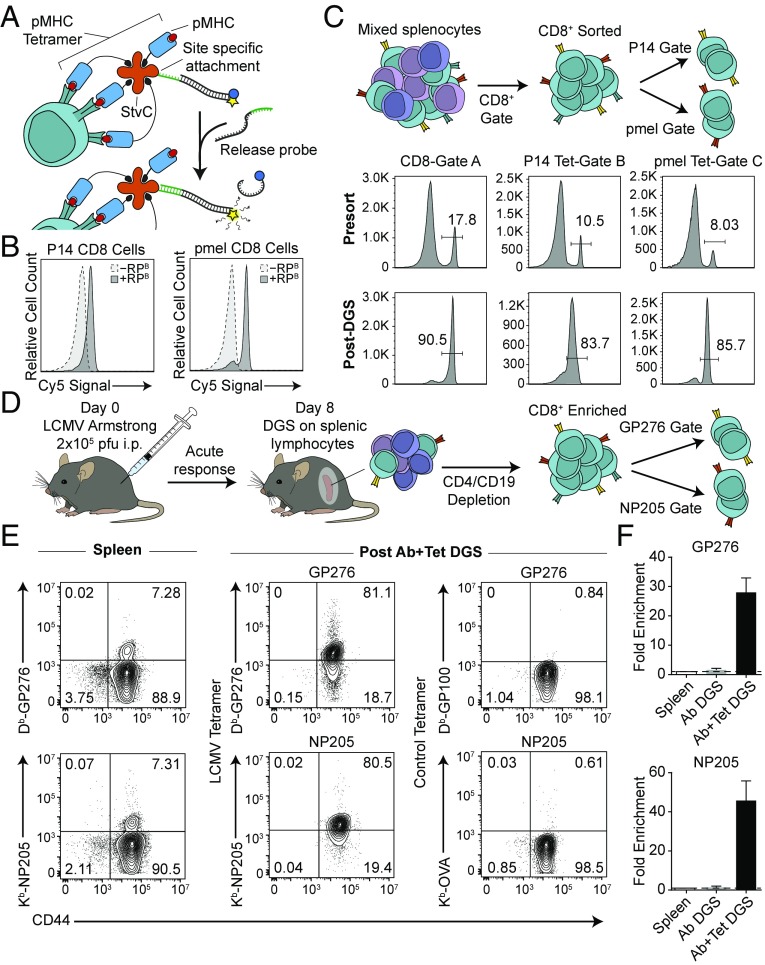Fig. 5.
Dual gated DGS with antibodies and pMHC tetramers isolates viral-specific CD8+ T cells from an endogenous polyclonal immune response. (A) Quenched DNA gates were site-specifically conjugated to pMHC tetramers. Upon addition of the corresponding RP, the quencher-labeled CP was displaced by strand displacement, permitting fluorescence. (B) Splenocytes from P14 and pmel TCR transgenic mice stained with corresponding quenched tetramer-TPB:CPB complexes showed increased fluorescence after addition of RPB strands. (C) CD8+ T cells from P14 and pmel mice were sorted by antibody and tetramer DGS from a mixture of B6, P14, and pmel splenocytes using a double positive gating scheme. (D) C57BL/6J mice were injected i.p. with 2 × 105 pfu of LCMV Armstrong, and LCMV-specific CD8+ T cells were isolated at day 8 postinfection using antibody DGS to deplete CD4+ and CD19+ cells, followed by tetramer DGS to isolate LCMV-derived GP276- or NP205-specific populations. (E) Frequencies of GP276- or NP205-specific T cells in the spleen and after sorting by DGS. Specificity of isolated cells was verified by staining with allele-matched control tetramer. Data shown are gated on CD8+ cells. (F) Fold enrichment in GP276- or NP205-specific T cell populations from the spleen after CD4 and CD19 depletion (Ab DGS) and after DGS with tetramers (Ab+Tet DGS). Data shown as mean ± SD, n = 2 for GP276, n = 3 for NP205.

